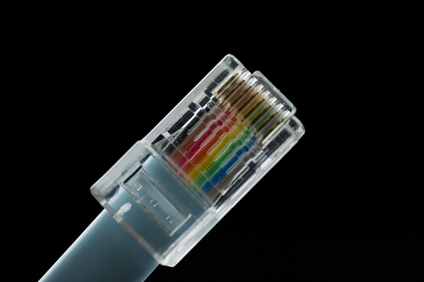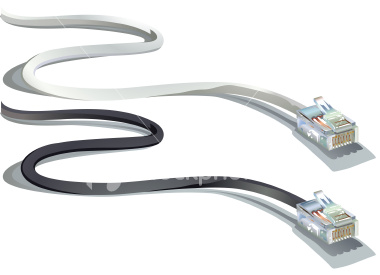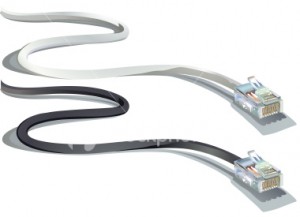
Advantages Of Using Cat6 Cables
 Category 6 or Cat 6 network copper cabling is the preferred infrastructure for Ethernet, Fast Ethernet, and Gigabit Ethernet. It has a maximum performance of 250 MHz, or 500 MHz for the more contemporary Cat6a standard. This type of cabling may be utilized for a maximum distance (end to end) of 100 meters, or 55 meters for the 10 GBASE-T networks. Aside from support for higher performance, Cat6 includes more rigid specifications for crosstalk and system noise. Although Cat6 is anticipated to surpass Cat 5 and Cat 5e cabling soon, all three cable varieties are still widely used for network installations.
Category 6 or Cat 6 network copper cabling is the preferred infrastructure for Ethernet, Fast Ethernet, and Gigabit Ethernet. It has a maximum performance of 250 MHz, or 500 MHz for the more contemporary Cat6a standard. This type of cabling may be utilized for a maximum distance (end to end) of 100 meters, or 55 meters for the 10 GBASE-T networks. Aside from support for higher performance, Cat6 includes more rigid specifications for crosstalk and system noise. Although Cat6 is anticipated to surpass Cat 5 and Cat 5e cabling soon, all three cable varieties are still widely used for network installations.
Fast and Credible Performance
Most IT experts recognize this type of copper cabling for its speedy network performance due to its ability to deliver gigabit data transmission speeds. It has a parallel structure similar to Cat5 and Cat5e. These copper cables have eight wires coiled as one to form four pairs. The major difference is that one pair of the Cat 6 cable wires does not touch the others, so it can produce twice the transmission capacity of the two other models.
It is also backward compatible. The plug and port of Cat6 cable is the same as the 5 and 5e models. Thus, it can be plugged into any outlet that supports these cables. For instance, you can use the Cat 5 connection for a Cat 6 cable although it will not produce the full speed of the Cat 6 cable.
Resistance to Heat and Flexibility
Copper cables are second to silver in terms of effective conductivity, but among non-precious metals, these wires can cope with a broader load of electricity with less need for insulation. Furthermore, copper cabling has more resistance to heat, which eliminates overloading problems. They are impervious to corrosion despite their shiny surface. Copper is also more pliable, so it can be twisted without the risk of splitting. In fact, copper is used in fabricating thick wires for applications where very thin wires are required. It can also be part of an upgrade if you are looking forward to a more optimal network. Copper Cat5, Cat5e and Cat6 are the industry standards for most small to medium sized offices.
There are certain problems that deserve consideration. Such as copper cabling failure in high-performance wiring systems. Users may also need to contend with poor component performance, such as bad cable segments or connectors that do not comply with specifications. However, these problems are frequently the result of human error. So the choice of copper cabling is still a good one.


 One of the most important things about
One of the most important things about 
 Category 5e and Cat6 Cable
Category 5e and Cat6 Cable